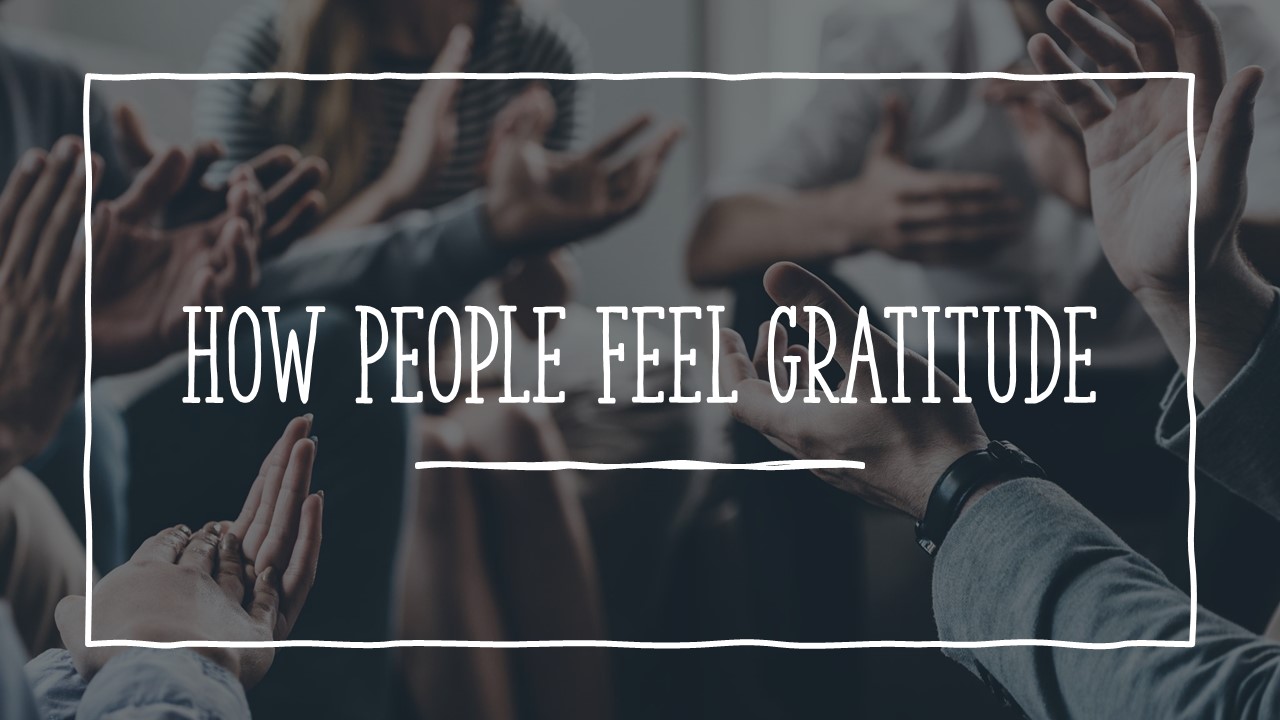Being grateful makes our relationships with other people stronger. When people feel grateful, the way they feel grateful and the emotions that accompany this experience strengthen their sense of belonging to the group and their connectedness with others.
What Is Gratitude?
Gratitude is a set of dispositions and emotions characterized by being thankful and appreciative for what other people and life give to us. There are many things for which we may be grateful.
Gratitude is daily and widely involved in our interpersonal communication and relationships. Clearly, gratitude plays a crucial role in interpersonal relationships. An essential component of practicing gratitude is recognizing and appreciating the people around us and the things they do for us.
Gratitude is an essential component of romantic and companionate relationships. In some respects, gratitude is the feeling of being thankful for what another person has done or continues to do for us.
Being thankful makes us feel better, both physically and mentally. It makes our lives and relationships better in many ways. Some people tend to be grateful more frequently than others. How does their experience of being grateful reflect on their emotional experience and feelings? How do grateful individuals feel gratitude?
A Study of the Lived Experience of Gratitude
Patty Hlava and John Elfers, researchers at Sofia University in California, conducted a qualitative study exploring how people feel gratitude in their lives. They also examined the benefits of experiencing and expressing gratitude. What is the meaning of gratitude for their lives, relationships, and emotions?
How Emotionally Do Grateful People Feel Gratitude?
Being grateful is an emotional experience characterized by varying intensity. People experience gratitude with subjective feelings that can range from low intensity to overwhelming.
Many participants of the study reported their feelings of tearfulness and overwhelming emotion—the sense of taking the breath away, of bursting with feeling, or of fullness. Men and women described the range of emotional responses to gratitude, from mild feelings of appreciation to the sensations of upwelling tearfulness. The tears, however, were not from sadness. Some admitted that the power of the emotion made them silent, uncomfortable, and embarrassed.
Participants commonly feel gratitude, describing it with positive emotions such as joy, release, love, peace, security, and happiness.
Some examples of quotes from participants are:
I start tearing because I’m so—it’s an overwhelming emotion. It’s an overflowing with joy kind of feeling. (Joe)
My eyes fill with tears, but I do not feel sadness. I feel at a loss for words and am filled with gratitude and love. (Zoe)
I just burst into tears, and I was crying, I mean, in addition to just the positive feelings of just gratitude and excitement. (Louise)
(Hlava & Elfers, 2014, p. 444).
Somatic Experiences in the Heart and Chest
These are the sensations of warmth and the feeling that the chest and heart are expanding. It is often described as fullness, swelling, or lightness. Participants often described the feelings in their hearts as softening or melting into something larger. The feeling of the breath was light and expansive.
The feelings in the heart and chest are sometimes identified as the “core” and central feelings of people’s gratitude. Several quotes from the participants include:
I noticed a fullness in my chest like my heart is bursting, and it’s full. Not an uncomfortable feeling, like a warm feeling, almost like love but not as localized or something. It’s less concentrated. It’s just a bigger feeling. (Allison)
A slow dawning, more of a warm feeling inside of you rather than something that suddenly catches you by surprise. (Louise)
[The heart sensation] is not flat. It has dimension. That is why I feel it is the core. (Sophie)
(Hlava & Elfers, 2014, p. 445).
The sensation of warmth is another feature of how people somatically feel gratitude. Participants frequently indicated the feelings in their upper and middle backs. They also experienced the rush and flush of warmth in the abdomen, the skin, the face, the throat, and the feeling of warmth and flushing in the entire body. These warm feelings in the chest are commonly associated with sensations of elevation.
The Somatic and Psychological Feeling of Release
The way people feel gratitude is commonly associated with somatic and psychological feelings of release. They frequently described these feelings as letting go, a feeling of lightness, a weight lifted, liberation, and freedom.
I had, for lack of a better term, a long internal sigh. I was so relieved. (Link)
I just feel so relieved, just like something left my body. (Aneska)
It was like I had a huge weight lifted off of me. (Cait)
I remember being released. I was completely and utterly free. (Herbie)
(Hlava & Elfers, 2014, p. 446).
Participants describe these feelings as a deeply somatic experience in terms of shoulders relaxing, a reduction in stress levels, a lighter, bouncier step, and a weight lifted off.
